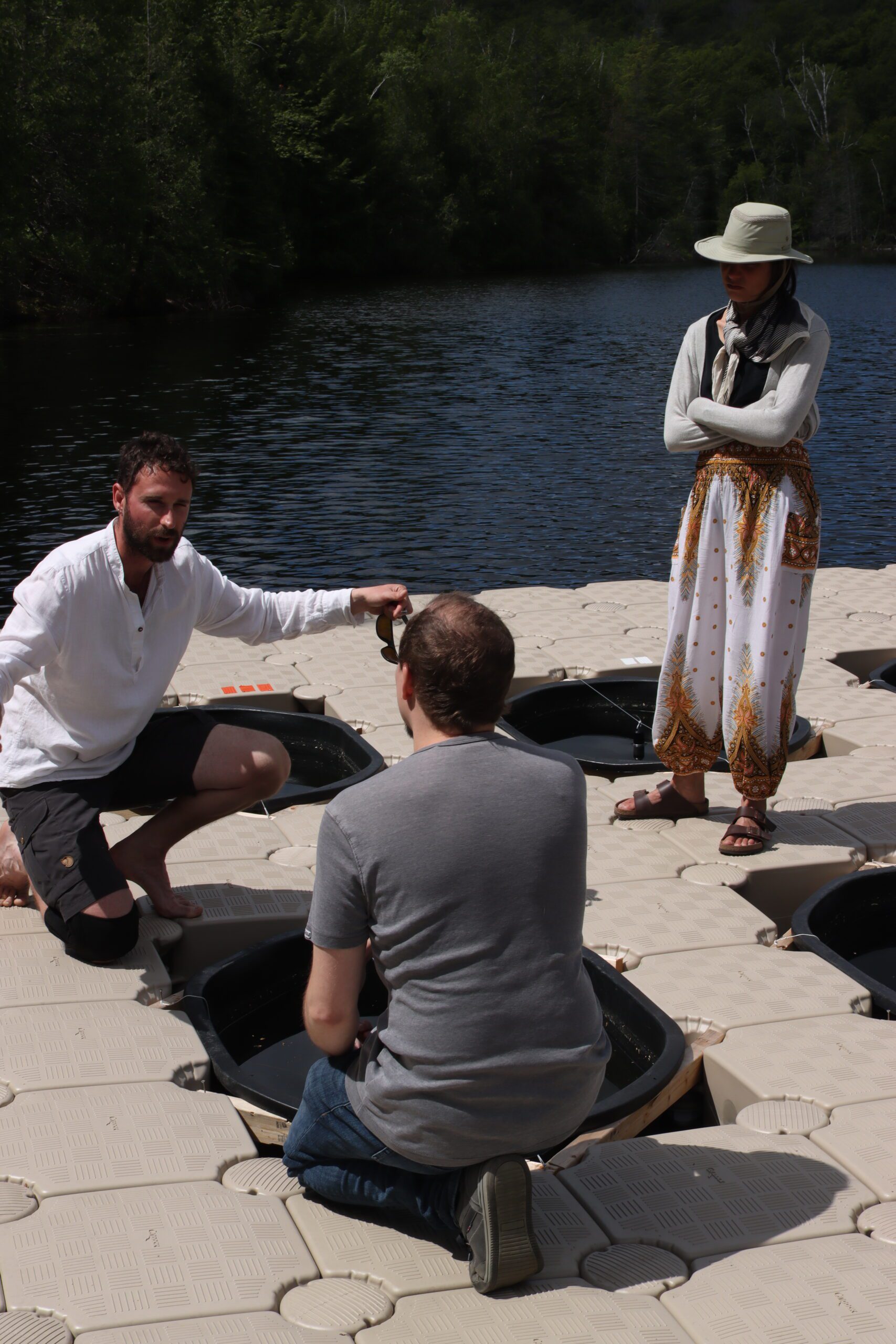
From July 4 to 8, the Laurentian Biology Station in Saint-Hippolyte welcomed four artists. The goal is to put them in contact with scientists, so that their research will inspire future work. This research residency will culminate in two exhibitions, in Contemporary Art Museum of Laurentians and on University of Montreal Exhibition Centerin the fall of 2023.
You have to drive a long time, sometimes on small dirt roads, to reach the Laurentian Biological Station, in the heart of the Hippolytoise Forest. This large area of 16 km2Protected for fifty years, it is a small campus of the University of Montreal, explains its director, Gabriel Lanther.

Artist Felix Bernier plans to use Charlie’s scientific data to create multimedia objects, which will allow us to see the results from an unusual perspective. (credit: Sebastien Florant)
“There is education being done here, to study on the ground, to see things more concretely than books. It is also a place that is used a lot for research.” Others come to work on their thesis or doctoral thesis, away from the distractions of the city.
In this rural environment, artists Félix Bernier, Laure Borgault, Anna Rjwakovic and Diane Moren came to search for inspiration and perhaps raw materials for their next works.
‘huge lab’
“The goal is to break down the silos. We often have researchers on one side and artists on the other. So artists come here, meet researchers, see what they’re doing and support them in their fieldwork. Then, they turn that inspiration into an art project.”Gabriel explains.
There is no shortage of research projects. Since the area is protected, the forest exists in its natural state, free from human disturbance. Cameras depict the evolution of plants here and throughout North America. Few teams are making an impact
Parasitic on fish species. Others are studying the effect of climate change on plants’ adaptation, via artificial warming of the soil.
“It’s like a huge lab. Sometimes people do their whole experiment here. Sometimes they use the fact that we’re protected to compare with what’s going on in another environment, where perhaps humans are more active. The possibilities are great, because we have a big playing field.”Gabriel explains.
Uncertainty Study
Anne-Marie Bailey, curator, is surprised at how much artists and scholars can interchange. “What I have come to realize is that there are a lot more connections than you think. Often not in terms of subject matter, but in terms of methodology. When they start talking to each other, the connections are made naturally. You don’t need to interfere.”

PhD student Charlie Saran is working on aquatic worlds, water containers that mimic ponds or ponds, to better understand the evolution of these ecosystems. (credit: Sebastien Florant)
“Indeed, the idea of basic research, whether in art or science, often unites them is a matter of philosophy”Anne Marie adds. Therefore the uncertainty principle was chosen as a theme for future exhibitions. Uncertainty is at the heart of scientific research.
PhD student Charlie Saran, for example, is working on mesozoic aquatic organisms. “They are like large ponds full of water, which spawn in ponds, puddles, or coastal areas of a lake,” He explains. On the sidewalk, there are about thirty such chests. In each, small probes measure different parameters, such as pH and dissolved oxygen. Charlie introduces different materials, such as maple leaves or dead insects, to see their effect on the aquarium’s ecosystem, such as the development of algae.
The doctoral student does not hide the fact that this type of research is primarily aimed at providing theoretical knowledge. But that’s also what fascinates artist-in-residence Felix Bernier. “Researchers collect a lot of data. With that data, they can create certain models. What I like to do is work with the same data to create new relationships, to represent something completely different, something new,” He explains.
A software engineer, Félix has already used other data to create audio or 3D environments. By representing it in a new way, the data can reveal a new aspect of itself or a new relationship between them. It could also give new ideas to scientists, who would see these things differently. » And since Felix is not constrained by theories, he can explore different approaches and go beyond what scientists can do. “This is where we will see different results.”
But under the July sun, and Felix chatted on the sidewalk, frankly confessing his uncertainty. Then what will happen to what you harvested here? I don’t have a clue, yet. » Charlie could say the same about his research project. After all, the point of all research is to explore the unknown and see what can be discovered there.